|
- Team Associated RC10 World’s Car - Review -
The perfect marriage of old-school nostalgia and new-age tech
By Aaron Waldron - Photos: Joel Navarro
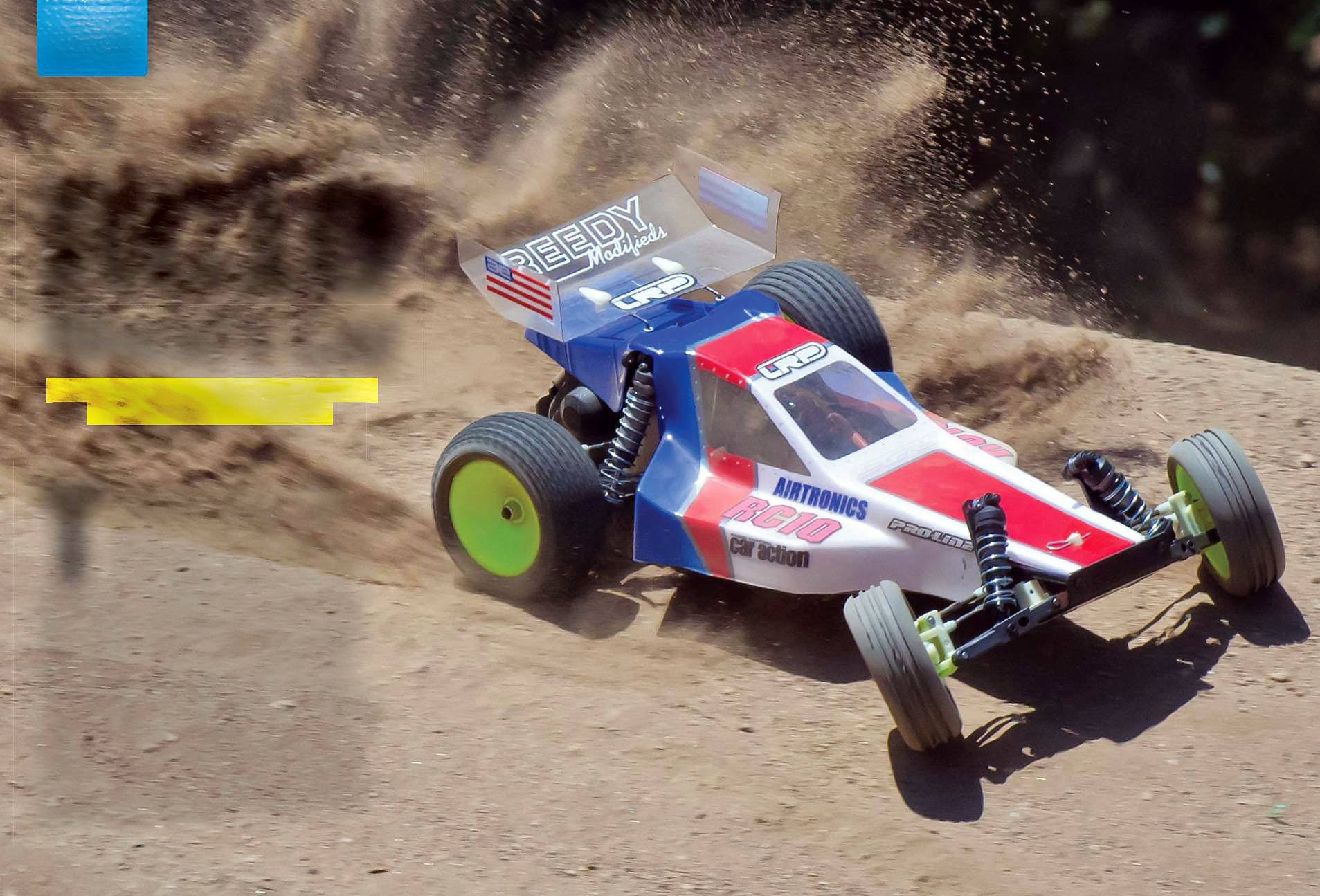
The original RC10 is credited with launching off-road racing to the forefront of the RC world, and introducing more hobbyists into the realm of competition than any other vehicle before or since. After setting the world on fire with the gold-tub RC10, the iterations that followed helped shape the future of car designs across the entire industry. After the first RC10’s initial splash in 1984, a graphite version with longer front arms followed in 1989, but the metal chassis made a return along with a host of upgraded parts (including the extended front arms) for the RC10 Championship Edition in 1990. The CE was updated with a new 2.25:1 transmission in 1992 to create the Team Car, and that kit carried the team through the 1993 season in which ’92 National Champ Brian Kinwald won his first IFMAR World Championship and the fourth for the RC10 family. To commemorate that win, Team Associated released the heralded RC10 Worlds Car with Brian’s paintjob on the box, and it was the last RC10 with an aluminum chassis until this year’s release of the RC10B5M. After more than two decades since Brian’s first Worlds title, Team Associated has re-released the RC10 World’s Car, which gains an apostrophe as well as select modern day upgrades that breathe new life into one of RC’s most iconic machines.
SOMETHING OLD
The same charm of the original Worlds Car is found throughout, from the wide spade front bumper to the equally metallic wraparound rear motor guard. The front and rear suspension geometry is untouched, and affixed to a deep aluminum tub chassis bolstered with nose tubes. The World’s Car’s graphite-laminated fiberglass shock towers and black plastic suspension arms replaced the fiberglass and white nylon components of the Team Car, significantly increasing the structural rigidity of the suspension assembly and allowing the shocks to work their best. The World’s Car also benefitted from the Stealth transmission with ball differential, but the new WC goes one step further with a stronger idler gear and more robust gear cover.
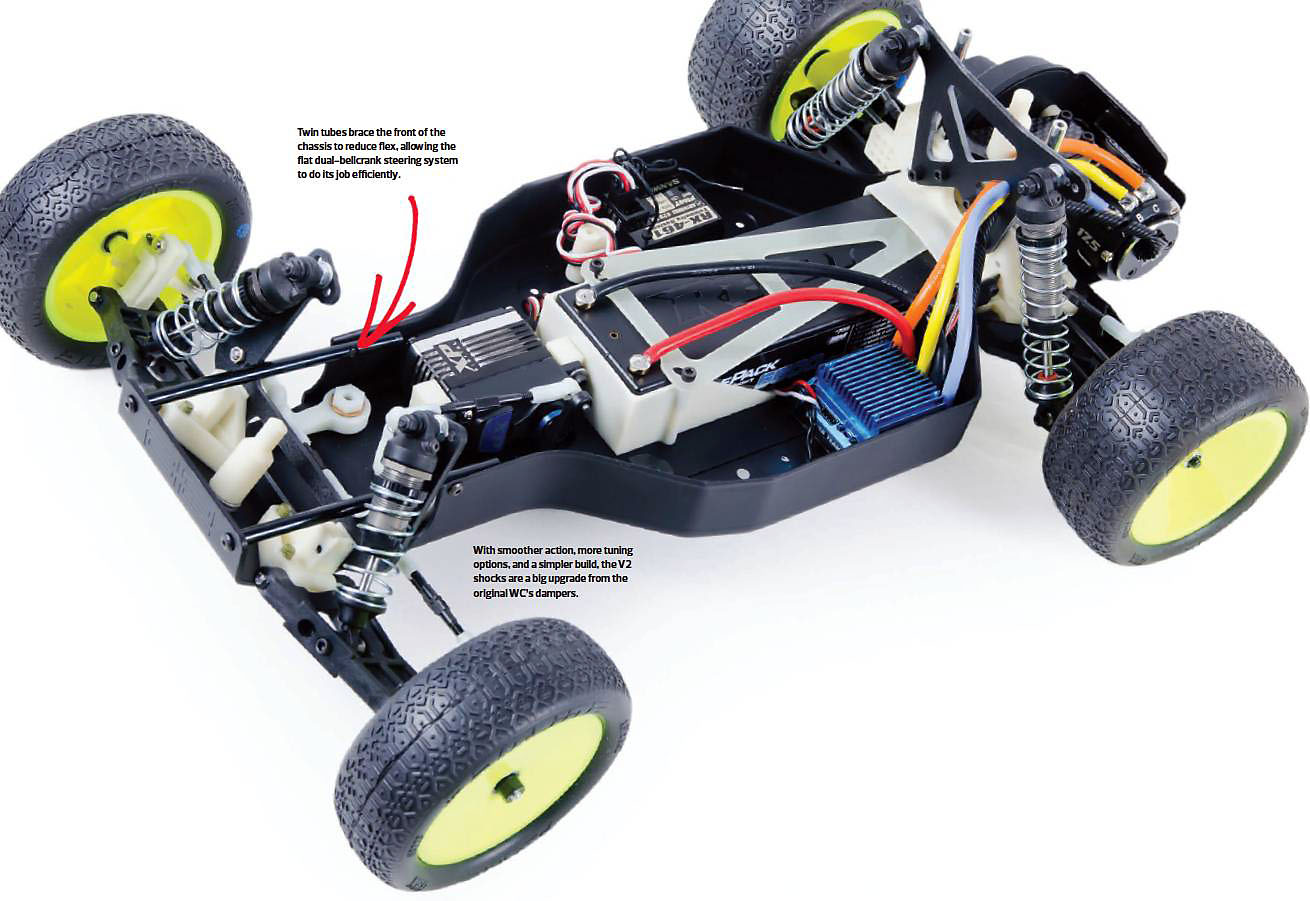
The Worlds’ most obvious departure from the RC10 Classic is the stamped and machined chassis’ black-anodized finish. Twin tubes brace the front of the chassis to reduce flex, allowing the flat dual-bellcrank steering system to do its job efficiently. With smoother action, more tuning options, and a simpler build, the V2 shocks are a big upgrade from the original WC’s dampers.
SOMETHING NEW
The World’s chassis begins life as a stamping like the RC10 Classic’s, but receives machined embellishments and a black-anodized finish.. The battery compartment and strap have been redesigned, too, to accept new-age batteries like high-powered LiPo packs that early-90s racers could never have imagined. Many of the suspension components have also been massaged for greater durability and increased performance, while also making them distinguishable for true vintage collectors seeking truly original parts. To better handle the power of today’s brushless motor systems, which far outshine what was available “back in the day,” new CV-style axles and driveshafts transfer power from the transmission outward. Rather than the three-piece beadlock fronts and 2.175-inch diameter rears of the original, one-piece 2.2-inch wheels are used at both the front and rear so that modern tires can be glued into place without modification.
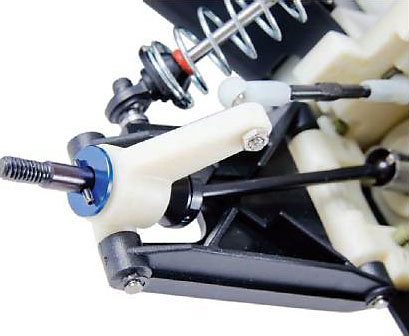
Even though many of the parts have been changed up a bit, the use of white and black plastics correctly mimic the components on the original Worlds Car. Note the large C-ring that helps to hold the CV-joint pin of the updated axles in place.
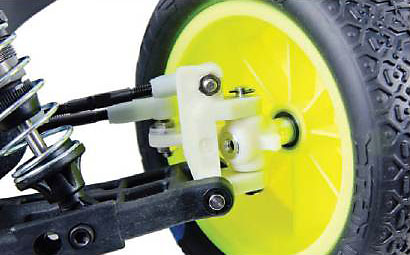
The 30-degree caster blocks on the original buggy, copied for the World’s Car, sharpened the original RC10’s handling for superior maneuverability.
SOMETHING BORROWED
Now that Team Associated’s current crop of off-road racers are fitted with 12mm big bores, the original top-loaded dampers of the original WC have been replaced with AE’s V2 shocks that were first found on the last version of the B4.1 ever released – ironically also called “Worlds Car.” In addition to offering smoother action and more precise preload adjustment, they’re much easier to build thanks to molded bleeder caps. Another B4.1WC donation is the V2 slipper, using dual octagonal slipper pads and large discs that are capable handling significantly more power than the original design, with more adjustability to boot – the larger dual pads have at least five times the surface area compared to the single, thin pad used on the ’94 version’s Traction Control clutch.
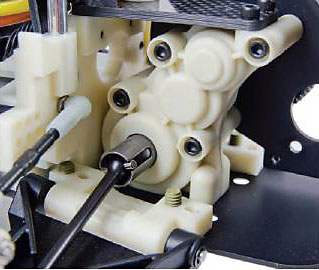
The rear bulkhead looks just like the old version, but has a new hole for the rear camber link that helps keep the rear end flat during corners – that’s important when using tires with significantly more grip than those available in the 90s.
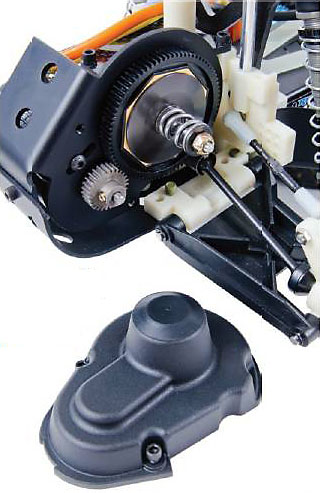
The V2 slipper clutch and tough black plastic gear cover are two welcome updates on the new version.
SOMETHING BLUE
The only blue you’ll find on the World’s Car are the anodized rear axle washers. Kinwald’s original paint job had blue included in the dripping pattern, and so does the patriotic scheme of our test buggy, but you’re welcome to paint the body whatever colors you’d like. The shell is a remake of the original Turbo Mirage by RC Performance Specialties, a small boutique in the early 90s owned by present-day Team Associated Vice President Cliff Lett. A 5.5-inch wing is also included, which must be mounted to the buggy using a piece of piano wire bent to stick down into two aluminum tubes mounted to the bulkhead behind the rear shock tower. A set of replica vintage decals are included to complete the look.
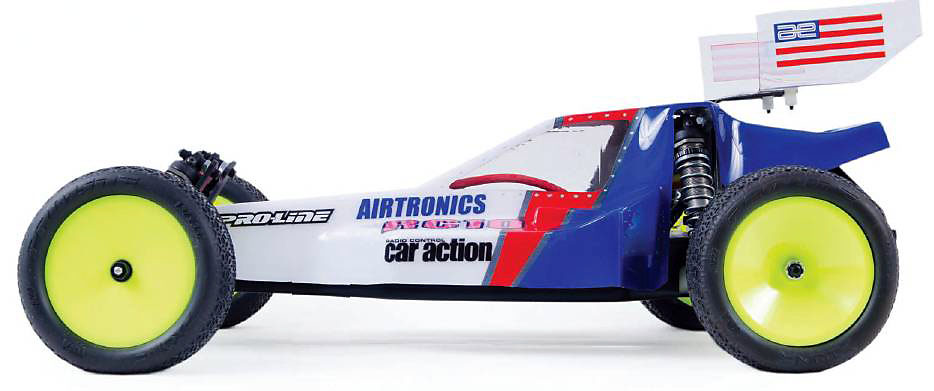
Source:

|
